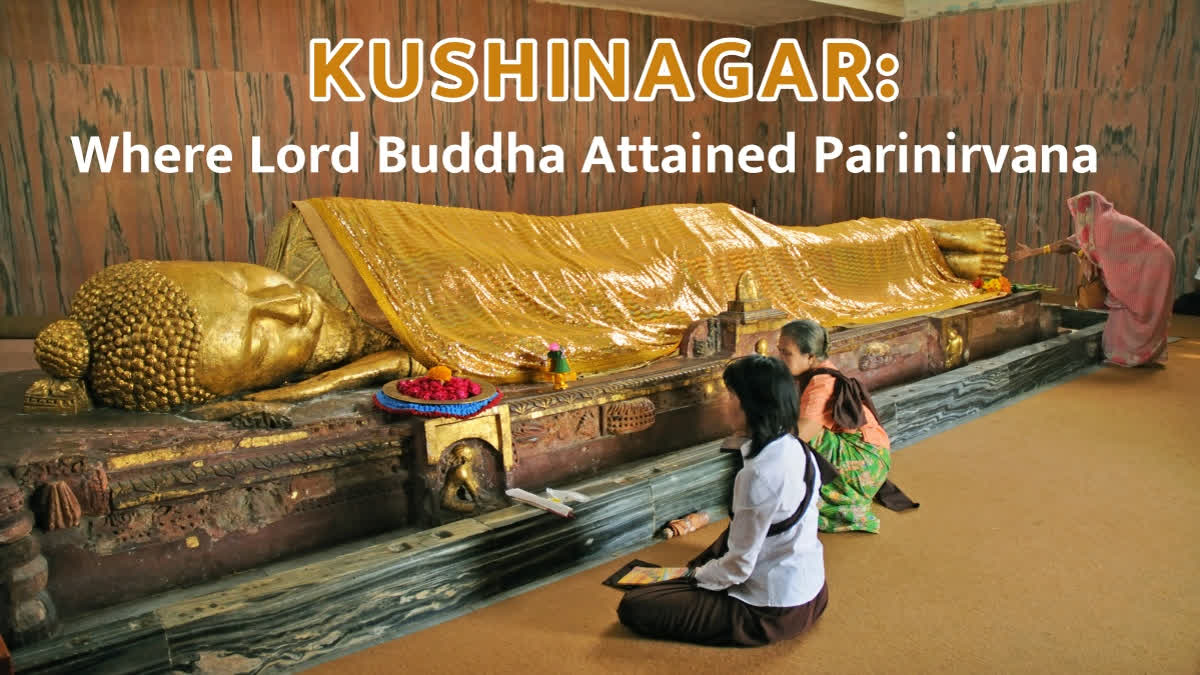Parinirvana Day commemorates the day Buddha passed away and reached final nirvana. It is often misunderstood as a final extinction. In the teachings of Lord Buddha, Parinirvana is the ultimate freedom: the release from all forms of clinging, from the illusion of a separate self, and from the cycle of birth and death.
The story of Kushinagar (where Buddha attained Parinirvana) begins not with grandeur, but with humility. It was here, under the shade of twin sal trees, that Lord Buddha chose to depart from this world. After 45 years of teaching the Dharma, of guiding countless beings toward liberation, he knew his time had come. This is a sacred space where Lord Buddha’s physical form merged with the infinite, where the cycle of birth and death was transcended, and where the essence of his teachings became eternally alive.
Back then Kushinagar was a small, unassuming town. It was not a busy metropolis like Vaishali or Rajgir, nor a spiritual hub like Bodh Gaya. Yet, it was here that the Buddha chose to enter Parinirvana, his final release from the cycle of samsara. Why Kushinagar? Perhaps it was its simplicity that called to him. Or perhaps it was the fulfillment of an ancient prophecy, as the Buddha himself had foretold that this would be the place of his final repose.
Sacred Sites of Kushinagar
On arriving in Kushinagar, the first thing that strikes you is the palpable sense of serenity. The town is imbued with a quiet energy, as if the very earth remembers the Buddha’s final moments. The centrepiece of Kushinagar is the Mahaparinirvana Temple, which houses a colossal statue of the reclining Buddha. This statue is carved from a single block of red sandstone. It captures the Buddha in his final moments, lying on his right side, his head resting on his hand. The Buddha’s expression is not one of sorrow or fear, but of tranquility. It symbolises that death is not an end, but a return to the source from which we all arise.
Adjacent to the temple is the Ramabhar Stupa, a large mound that marks the spot where the Buddha’s body was cremated. The stupa rises like a sentinel, its bricks bearing witness to centuries of devotion for 2,500 years.
Nearby, the Mathakuar Shrine is believed to be the place where the Buddha delivered his final sermon. It is said that even in his last hours, he continued to teach his disciples. His final words were reportedly about being a light unto oneself, to rely on the Dharma as a guide, and to strive for nirvana.
Tips For Travellers
For those who wish to follow in the Buddha’s footsteps, Kushinagar is accessible yet retains an air of timelessness. The town is well-connected by road and rail, with the nearest airport in Gorakhpur, about 50 kilometers away. Accommodations range from simple guesthouses to more comfortable lodgings, catering to pilgrims and travellers alike.
When visiting Kushinagar, it is best to arrive with an open heart and a mindful presence. Take time to sit quietly in the Mahaparinirvana Temple, to walk slowly around the Ramabhar Stupa, and to meditate under the sal trees. Engage with the local monks and nuns, who carry forward the Buddha’s teachings with unwavering devotion.
As we commemorate Parinirvana Day, let us remember that the Buddha’s journey did not end in Kushinagar... it transcended it. His teachings continue to illuminate the path for countless beings, guiding them toward the freedom he realized.
Read more:



